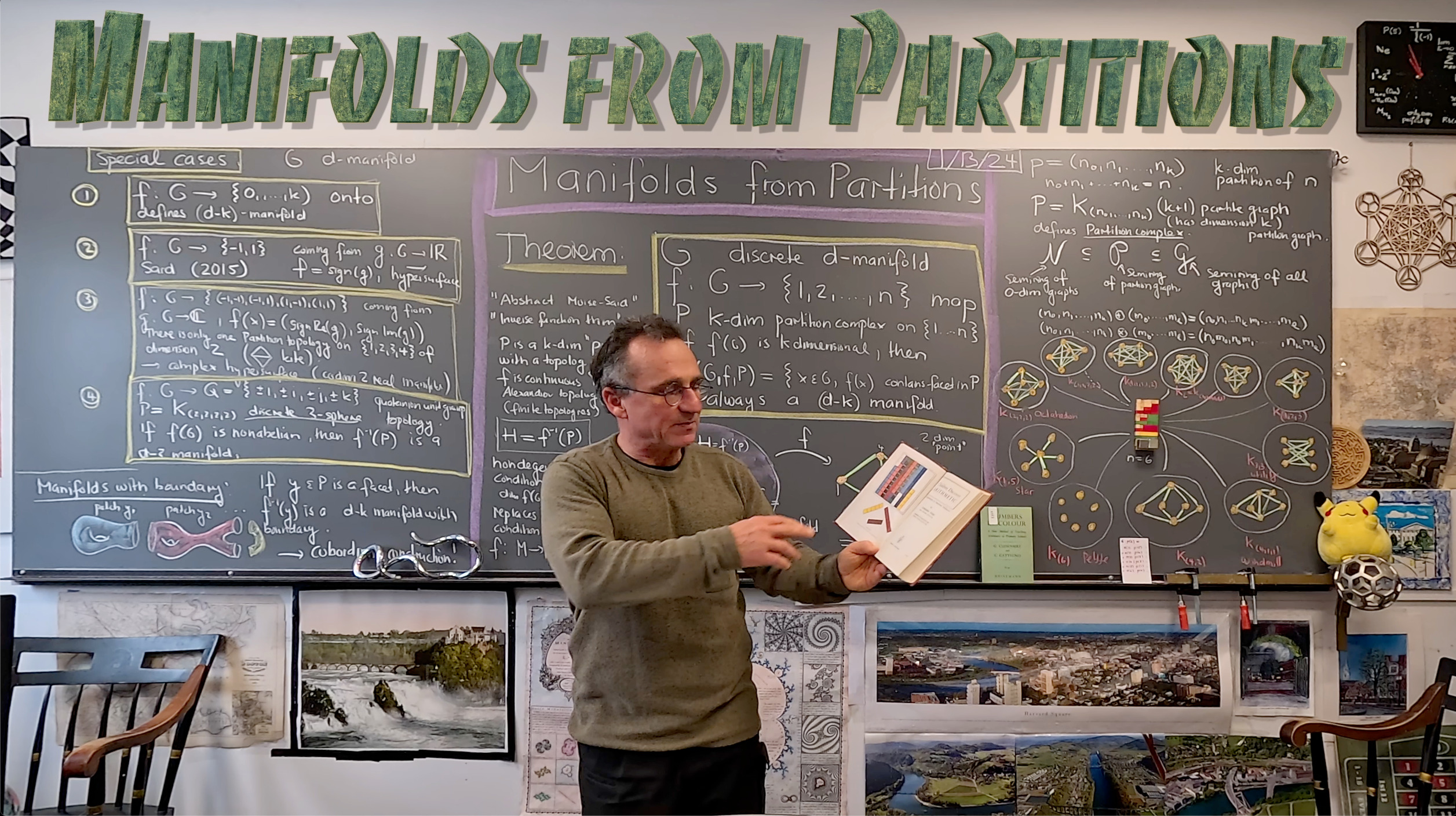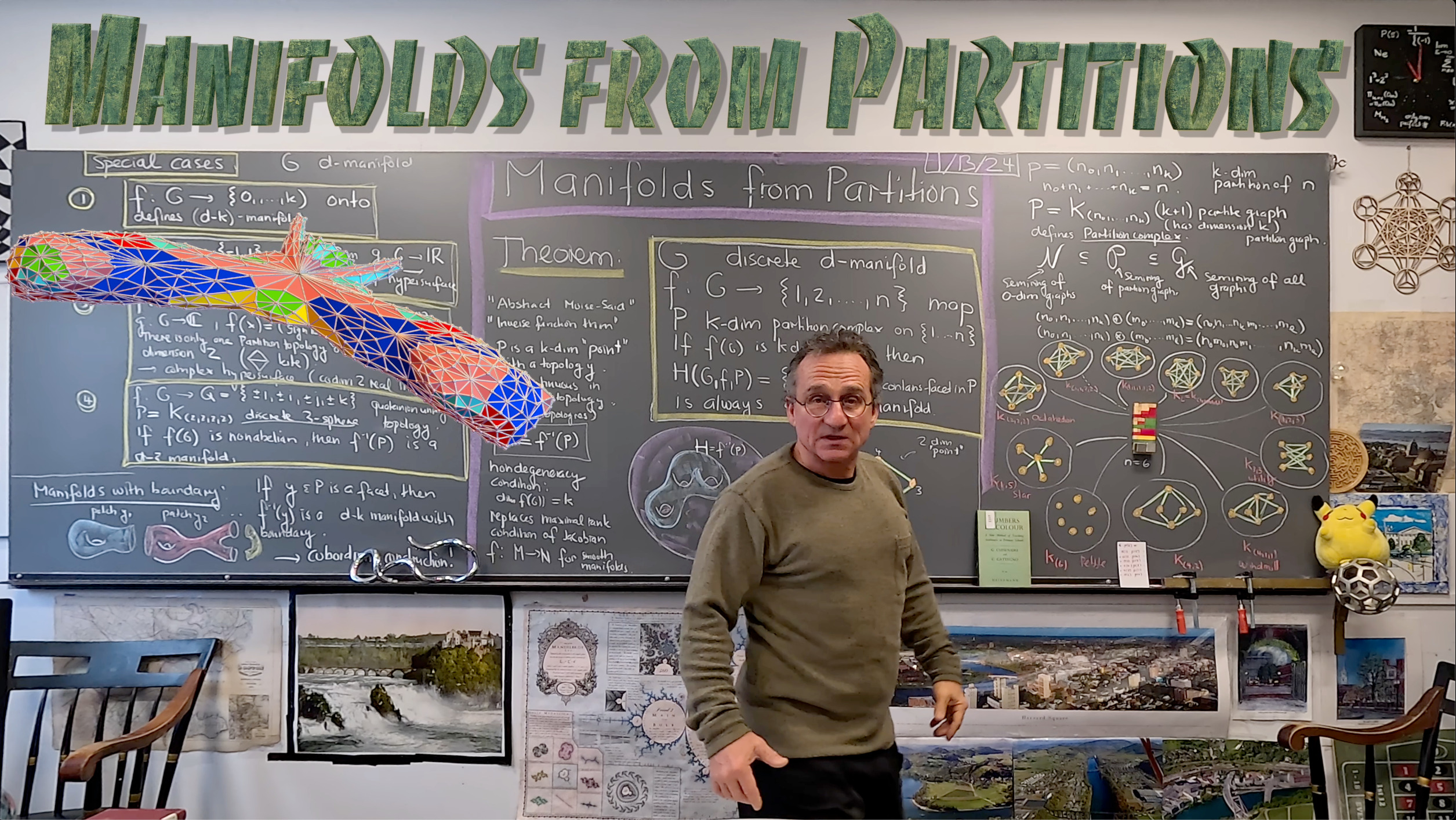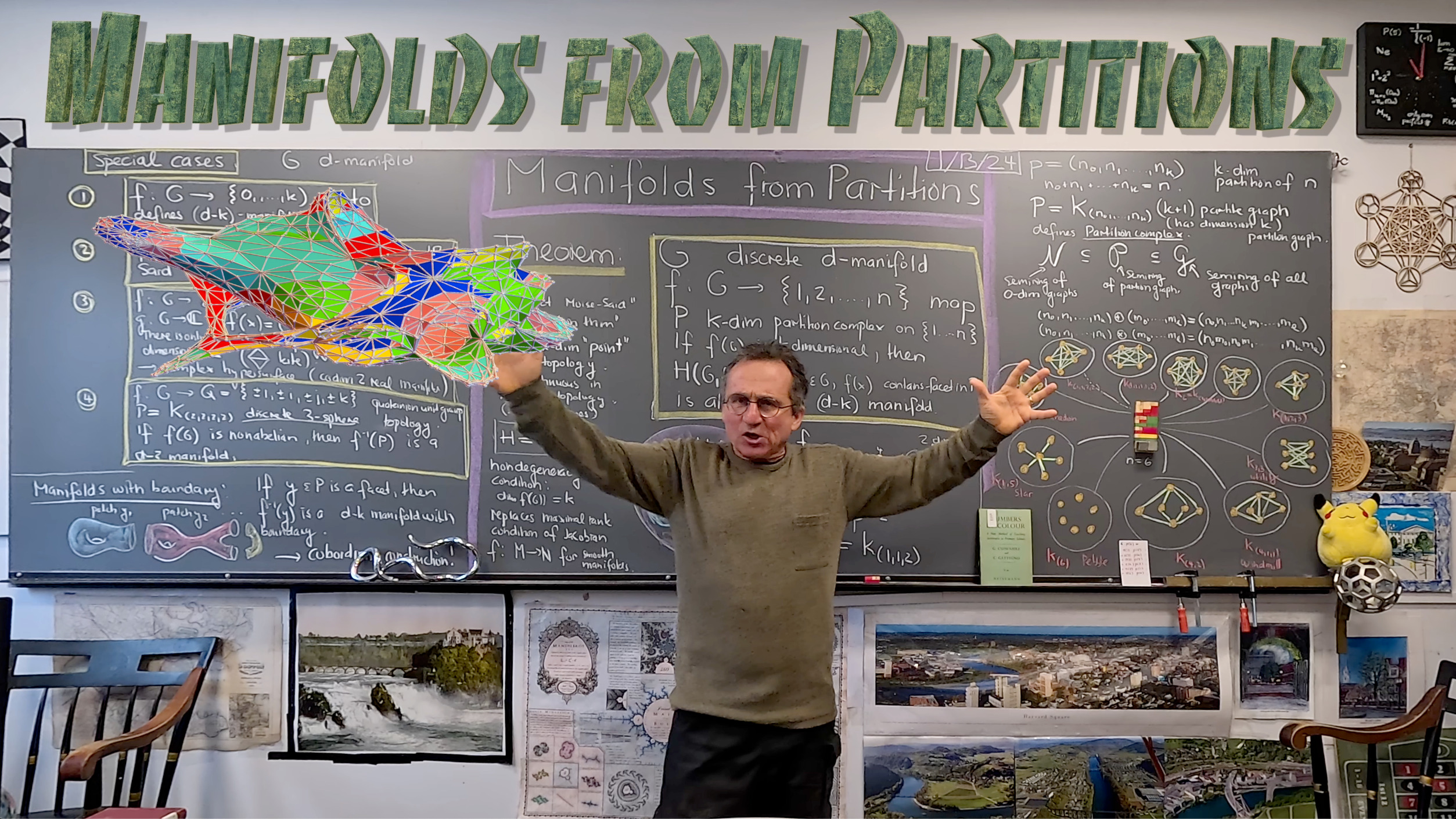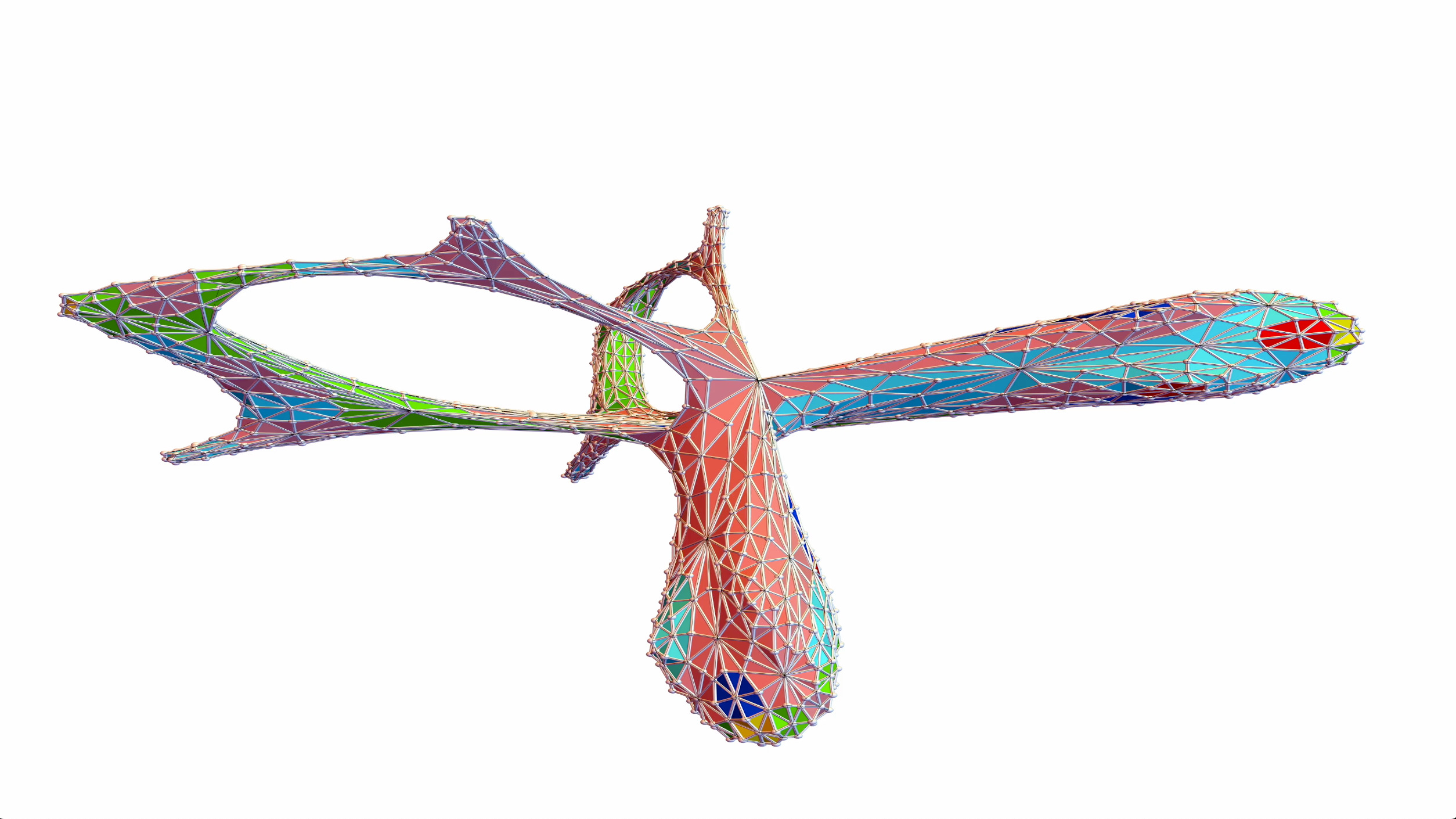Eugene Wigner in 1939 associated elementary particles with irreducible representations of groups, especially the Poincare group. In a first year algebra course, we learn about representations of finite groups and especially the symmetric group , where there are p(n) irreducible representations, where p(n) is the number of integer partitions of n. The topic of integer partitions was my first independent research project (“additive number theory”). It popped up in my college education only in the context of representation theory. Now, during the winter break of 2023/2024, partitions came in when looking at graphs P which have the property that any map f from a d-manifold G to a finite set {1,…,n} has the property that the “level set” {f=P} becomes a (d-k)-manifold. In that case, we have to need to impose on P a k-dimensional simplicial structure. I experimented with many: started with complete graphs, wheel graphs, star graphs, cyclic graphs, bipartite graphs, polyhedra, trees etc etc until it emerged that the good graphs (like the Kite graph, complete graphs, star graphs, octahedron graph, …) were characterized by being the join of zero-dimensional graphs. The Sard theorem from November 2023 dealt with the case where P=(1,1,2) (which is the kite graph the suspension of the 1-simplex). in the case of complex valued functions (4 possible sign cases where each the real and imaginary part has 2 sign possibilities) or P=(1,1,1,5) (a 5 star with triangular base) for functions which is
-valued (8 possible sign cases). In general, I had chosen in November 2023 the partition graphs
but of course not yet seen the full picture. What emerged in these experiments that the graphs (complexes) have to be small. An other key example is
which I call the windmil graph or Block Island graph because it played a role in my research both in 2016 and in 2023, when we visited that island. (I flew my drone to the windfarm this winter). I then realized that they are complete
-partite graphs
. I call them partition graphs and the corresponding k-dimensional complex a partition complex of dimension k. A star graph P=(1,n) for example is a partition complex of dimension 1, the octahedron graph is a partition complex of of dimension 2, a complete graph
is a partition complex of dimension (m-1). As Wigner thought about irreducible representations as particles we should think about these objects as particles. We can also think about them as “points” similarly as before, one could think about simplices as “points”. They have a much richer structure than the points of Euclid or the points one has in topology when looking at simplices as basic points (the Barycentric refinement picture. By the way, it is not an accident, that I developed Barycentric universality and discrete Sard at the same time in 2015). What is more important than nostalgic rants or philosophical ramblings are theorems. Here is the theorem, found when we were on Block Island (finding the partition structure took lots of experiments).
Theorem: If f is a map from a d-manifold G to {1,…,n} and the later is equipped with a partition simplicial complex structure P and f(G) has a k-dimensional image then H(G,f,P) the set of simplices in G which have the property that they reach a facet in P is a (d-k) manifold.
The condition that f reaches at least one facet is to ensure that we have reached dimension k in the image. If we would only reach a smaller dimensional part, then we would get a larger dimensional manifold. The condition of reaching the full image dimension k is the analog that the Jacobian matrix has full rank. In the pictures of the complexes shown, I also colored the parts which are mapped into the different facets (these are all (d-k) manifolds with boundary. Very nice way to generate pictures of cobordisms: split the facets (largest dimensional parts in P) into 2 sets A,B, then the manifold H produces a cobordism between A and B.
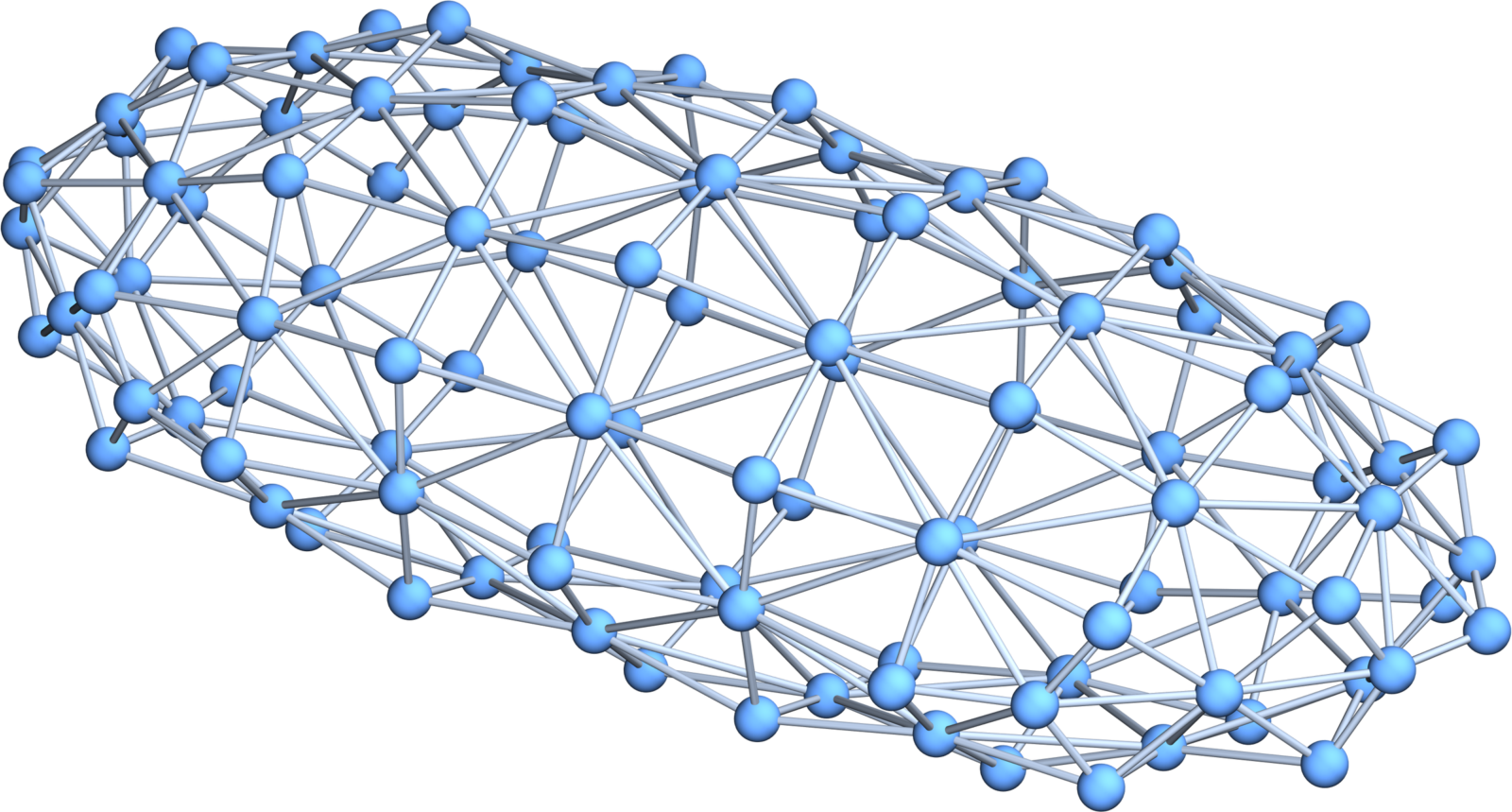
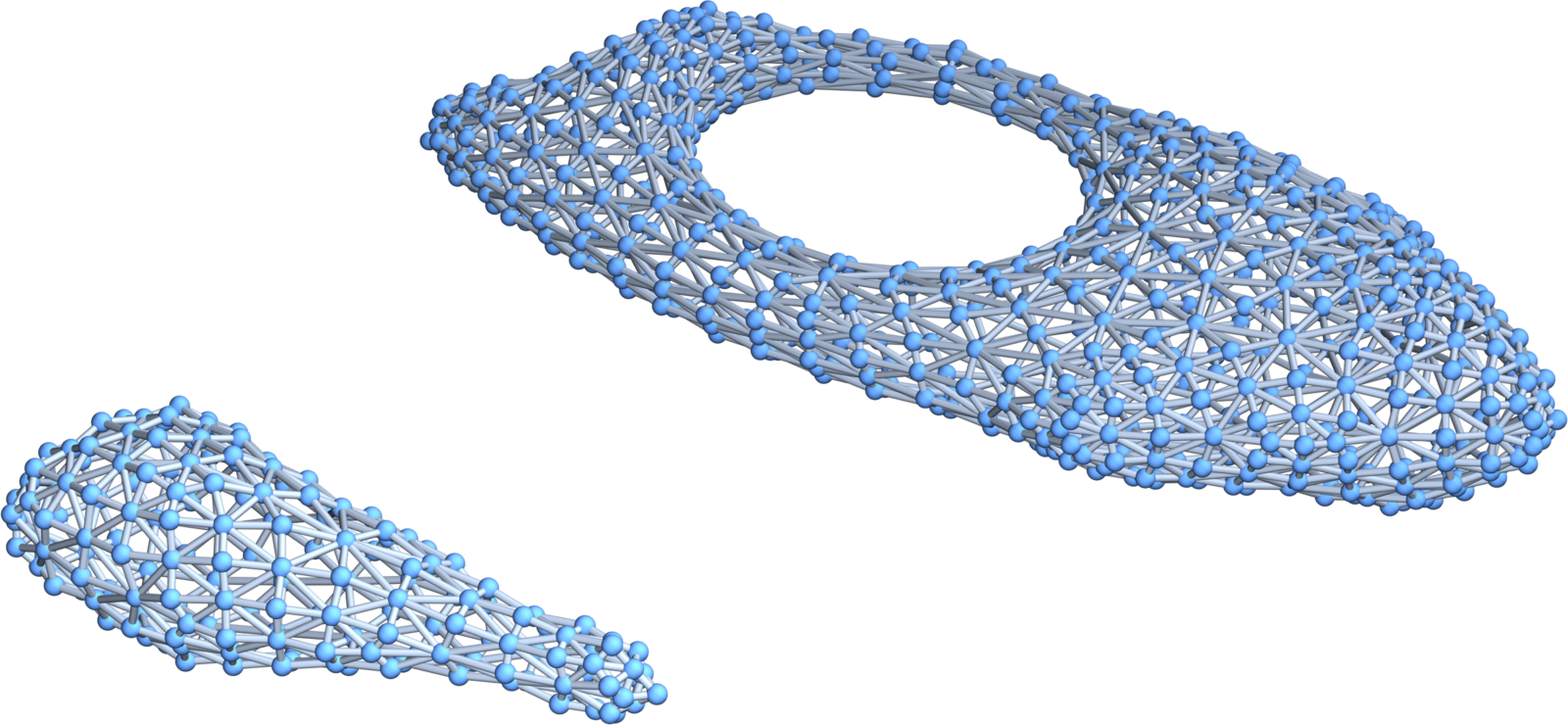
We need only G and a function from a d-manifold G to a partition on {1,..,n} we get a d-k manifold. The smallest 4 manifold has 10 vertices. It is , the smallest 4-sphere. Lets take P=(2,3,5) and the map (10,6,4,4,2,4,3,6,7,2). The complex P is 2-dimensional. To the left we see what it produced: it is a 2-sphere. It should be thought of as a submanifold of G. This is not a paradox as G has only 10 vertices. But H is a submanifold of the Barycentric refinement, which is much larger. The f-vector of G is ( 10, 40, 80, 80, 32) so that the Barycentric refinement has already 242 elements. As an other example, lets take
with icosahedron graph J, which is a 6 sphere with 26=12+12+2 vertices and P=(1,2,1,1,1) which is a 4-dimensional complex and where f is a random map from {1,…,26} to {1,…,6} (there are lots of them, each producing a new surface). The surface H is 2-dimensional. It has two connected components, where one is a 2-sphere and one is a 2-torus.
Finally, I must say, while all this is purely combinatorial and finite mathematics, one should still think about all this in the context of physics (I grew up as a mathematical physisist). In statistical mechanics for example, one looks at “fields” taking finitely many values. Ising, sigma models, lattice field theories). I myself worked also on operators where the potential takes finitely many values. Now, looking at functions on manifolds (space) taking values in representations of finite groups (particles) looks very much like that it could have relevance in physics. What I’m really excited about is the simplicity of the set-up. The code which produced the above pictures was a handful of lines.





